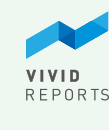In the fast-paced world of finance, the landscape of financial reporting is undergoing a significant transformation. As technology continues to evolve, so does the way we gather, analyze, and present financial information. In this article, we’ll explore the exciting trends and innovations that are shaping the future of financial reporting.
1. Real-Time Reporting and Analysis
The days of waiting for monthly or quarterly reports are fading away. Real-time reporting is becoming the new standard. With advancements in data integration and cloud computing, financial data can now be accessed and analyzed instantly, providing businesses with up-to-the-minute insights to make timely decisions.
2. Automation and AI-Powered Analytics
Artificial Intelligence (AI) and automation are revolutionizing financial reporting. Machine learning algorithms can quickly process massive amounts of data, identify patterns, and generate predictive analytics. Automated tools can reconcile transactions, detect anomalies, and even generate preliminary financial statements.
3. Interactive Data Visualization
Static spreadsheets are being replaced by dynamic, interactive visualizations. Graphs, charts, and dashboards make it easier to understand complex financial data and trends. These visual aids not only enhance communication but also empower non-financial stakeholders to comprehend and engage with financial information.
4. Integrated Sustainability Reporting
As environmental, social, and governance (ESG) factors gain prominence, financial reporting is expanding to include sustainability metrics. Businesses are recognizing the need to showcase their commitment to responsible practices through integrated reporting that combines financial and non-financial performance data.
5. Blockchain for Transparency
Blockchain technology is gaining traction in financial reporting due to its potential to provide unalterable, transparent records. It can streamline auditing processes, reduce fraud risks, and enhance data integrity, ultimately increasing trust between stakeholders.
6. Data Security and Privacy
With the increasing amount of sensitive financial data being shared electronically, data security and privacy are paramount. Robust encryption, multi-factor authentication, and strict compliance with data protection regulations are crucial to ensure the confidentiality of financial information.
7. Narrative Reporting
Narrative reporting goes beyond numbers to tell a compelling financial story. By combining financial data with qualitative insights, businesses can provide context and explanations for their financial performance, making reports more informative and engaging for stakeholders.
8. Predictive Analytics and Forecasting
Financial reporting is moving beyond historical analysis and delving into predictive analytics. Using historical data, machine learning algorithms can forecast future financial trends, enabling businesses to proactively adapt their strategies.
9. Collaborative Reporting Platforms
Collaboration among various departments is essential for accurate financial reporting. Modern reporting platforms facilitate seamless collaboration, allowing different teams to contribute to reports, verify data, and ensure accuracy.
10. Regulatory Compliance and XBRL
Regulatory compliance remains a significant aspect of financial reporting. XBRL (eXtensible Business Reporting Language) streamlines the process of submitting financial information to regulatory bodies, ensuring consistency and accuracy in data reporting.
In conclusion, the future of financial reporting is bright and technology-driven. From real-time reporting and AI-powered analytics to blockchain transparency and integrated sustainability reporting, these trends are reshaping the way businesses communicate their financial performance. Staying informed and embracing these innovations will be crucial for organizations seeking to thrive in the ever-evolving financial landscape.






